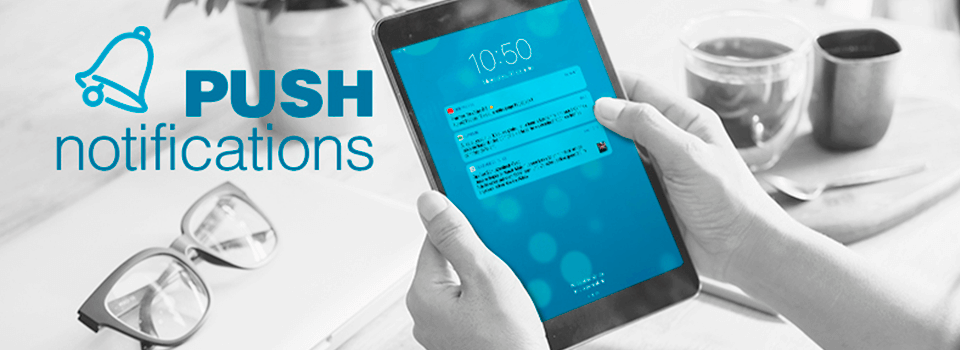Increase website traffic and you’ll make more money. It’s an easy fix.
Traffic is the engine that drives any online business. Without traffic, even the best website is doomed to failure.
Many small businesses solve their traffic problems by throwing money at them. And if you have deep pockets, you can buy all the website traffic you need through Google Adwords, Facebook Ads, and more.
But chances are since you found your way here today, you’re more like me. You don’t want to spend money on advertising, especially when there are so many great ways to get free website traffic online.
So today I’m going to cover all of my favorite ways. These strategies really work, you just have to implement them and stick to them. I challenge you to try at least 10 of these 16 strategies and stick with them.
You will be surprised by how powerful these traffic methods are.

Table of Contents
16 Ways To Increase Organic Traffic to Your Blog or Website
Blog regularly
You need to add content to your blog regularly. At least once a week. If you can do it 2-3 times a week, that’s even better. It’s much better if you can do it on a daily basis.
Google and other search engines love fresh content, and they plan their visits to your site based on how often you post.
For example, they could start coming by every few weeks. But if they see you posting weekly, they will come weekly to index your new pages. If you post daily, they will come daily.
By the way, indexing means that your page can now be found in the search engine. So if you post a lot, your pages will have an easier time making their way to the SERPs in less time.
And by the way, I’m not talking about posting a few paragraphs. Google and other search engines love LONG content. While you can get away with about 500 words, it’s better to sit down and write for an hour or two.
This is a great way to post content that is at least 1,000 words long, or over 2,000 words if you have the time. They love that, so give it to them and you will be rewarded.
On-Page search engine optimization

On-Page SEO is a great way to get free traffic. Basically, you make sure that all of your web pages and posts are optimally set up for search engines. I do this with a free WordPress plugin called Yoast.
Yoast analyzes my post for me before I publish it and tells me where I can improve SEO factors like title, meta tag, description, and content.
It takes about half an hour to set up Yoast on a WordPress site, but you only have to do it once. Once you set it up, it adds just a few minutes of work to each blog post you publish.
Those extra few minutes of work will maximize your onsite SEO for every piece of content you publish. If you want to improve your search engine exposure, this is time well spent.
Another popular plugin for this is called All in One SEO.
Off-Page SEO (Link Building)
This type of SEO is a bit more time-consuming than onsite SEO, but it can bring you a lot of traffic, especially in the long run. Basically, it is all about increasing the number of inbound links to your website.
There are many ways to do this, including guest blogging and forum posting, and I’ll cover many of them in this post. If you want even more link-building strategies, I recommend reading this post by another blogger.

Link to other authority sites and blogs
Google seems to like it when you occasionally link to other authority sites in your niche. See how I did that in the tip above? It can help your own page rank better and you can build relationships with other bloggers, which can lead to lucrative JVs and other forms of partnerships.
Link to other posts and pages on your own website
As you create and publish new content on your blog, always look for opportunities to link to other blog posts you’ve already written.
These internal links can really help you with search engine optimization, and they have the added benefit of providing a more useful experience for every visitor to your site. This is important to Google, which means it can significantly increase your traffic over time.
Guest blog post
 You already know that blogging frequently can bring a lot of traffic to your websites. But you can also use traffic from other bloggers to drive traffic to your own blog.
You already know that blogging frequently can bring a lot of traffic to your websites. But you can also use traffic from other bloggers to drive traffic to your own blog.
Many bloggers find it difficult to keep up with a busy blogging schedule, especially when they have so many other tasks to attend to in their online business. So when an expert in their own niche comes along and asks if they can take over blogging duties for a day, that’s a welcome relief!
Start by finding blogs in your niche. In Google search just type in your niche keyword + blogs.
If you find one you like, go to similarweb.com and paste the blog’s URL into the tool and click start. Next, the results will be displayed and you can see an approximate traffic profile for the site.
Whenever you find sites you like, have a decent amount of traffic, create a blog post that you think would go well with the site. For example, if it’s a golf instruction blog, create a blog post about driving, chipping, or putting tips. (If you can’t post it there, you can always post it somewhere else.)
Be sure to add a bio blurb for the blog owner. This is something that comes before or after the blog post that says a little bit about who the author is – with a link back to your domain. It shouldn’t be too long – maybe 2 or 3 sentences max. Some blog owners also let you include a link in the body of the post, which can help even more with your off-page SEO efforts.
After submitting your post, go back to the SimilarWeb results page and click Similar Sites. This will help you find more blog owners to contact.
Post on Facebook
Facebook has a variety of traffic options that you can use. It is against the Terms of Service to have more than one profile page. But that shouldn’t stop you from having a Facebook Page for every website or blog you own.
Create a Facebook page (formerly known as a fan page) so people can “like” it and follow you that way. On a Facebook Page, you can post links, videos, and images just like you can on a blog.
If you want to automate adding your blog posts to your Facebook page, plugins are available for that. Once is called Facebook Auto Publish and is a free plugin that works seamlessly in the background.
Once you have your Facebook page and auto-publishing plugin set up, you can move on to the other major social media platform…
Post on Twitter

Some people (like me) mistakenly ignore Twitter because they’re worried about how much marketing they could do with just 140 characters. But the reality is – you can get a lot of traffic from Twitter!
Not only can you post messages (including links) to your Twitter stream, but these messages can also be retweeted to more people if your followers click the Retweet button for you.
Make sure you treat your Twitter followers the same way you treat followers on other social networks. Check out the feed and interact with them on their posts and retweet some of their posts as well.
Don’t just market to them. Have a good mix of personalities in your Twitter stream to create stronger brand loyalty. Let them get to know the person behind the account.
Personally, I don’t have time to tweet daily, so I automated the process with this strategy.
Use push notifications
You may have heard of web push but aren’t sure how it works. It’s a fairly new technology that may sound confusing on the surface, but it really isn’t. And it can really increase traffic to your blog.
In short, web push brings visitors back to your site by offering a free new post notification via a small button. In fact, I’ve added a little web push button to this website you’re on right now.
To set it up, I used a free service from OneSignal – while there are a handful of services that offer push notifications, like VWO Engage ( formerly PushCrew), and many server-based solutions, I chose OneSignal because it’s 100% free with unlimited Subscribers was and pushes.
And honestly, it was the easiest I could find. Adding the plugin and button took about 30 minutes in total.
OneSignal makes it very easy to add web push notifications with its Web Push API, which allows users to choose whether they want to receive personalized push notifications from your websites on their PCs, tablets, or smartphones.
Their website comes with simple videos to walk you through the setup process and it really is a breeze. After setting it up, I tested it by visiting my website from my smartphone and clicking OK when it asked me if I wanted a notification when new posts were added.
Now I’m reminded how well it works every time I add a new post – I get this nice little notification sound on my Android phone along with a visual notification and a link to my website. Cool! And people who accept notifications in their browser will see my post notifications the next time they open their browser.
Over the past few months, I’ve gotten a 5% click-through rate from these push notifications, which is definitely worth the effort.
If you’re not using OneSignal or any other web push solution on your blog, you’re missing out on adding more subscribers. Keep in mind that some people may not want to sign up via email, and some email subscribers may miss your emails in their sea of daily spam.
Bottom line, OneSignal is definitely worth the one-time setup effort, and remember, it’s completely free!

Build and use an email list
This is overlooked by too many companies simply because it “seems” like a lot of work to set up. I assure you it is not. Email marketing is the main reason I’ve been in business online for more than 20 years. Quite simply, it works better than any other traffic strategy I know of.
While you do need to invest in an autoresponder service like Aweber (which I use), the cost is minimal. And the strategy itself is 100% free.
I could write for hours on how to set up your email marketing and reach out to your subscribers, but I refer you to this post if you want more information.
Learn How You Can Make $60k In 4 Weeks With Email Marketing. CLICK HERE
Post on niche forums
Joining forums for your niche that are frequented by real people is a great way to increase traffic and also grow your inbound links. Many forums allow you to add a signature file that will automatically appear under every post you make on the site. So when you reply to someone else’s thread, your message will appear with a sig file underneath.
However, most forums have rules about SIG files, and some don’t allow them at all. You may be able to use a mix of images and text, or one or the other.
Remember that the best way to leverage your sig file is to provide good value to the forum. Often when people read a thread you start and are amazed at its great value, they will click on your sig file to see what else you have to offer!
Use article marketing
I’m sure you’ve seen a lot of information about article marketing. Yes, it can be time-consuming and tedious, but it still works to get you traffic and backlinks.
Basically, you write articles and submit them to websites along with your bio and link.
Here are some pointers to help you get the most out of your article marketing efforts:
- Most article directories are free. Others have perks for those paying a monthly price — like faster item approval. Decide if premium services are worth it to you, in most cases, it’s not worth the money in my opinion.
- Work on developing your call to action. This is the little area at the bottom of your article that gets people clicking through to your link. Don’t be boring and just say something like “For more information click here” because that’s not interesting enough to justify a click. You must arouse curiosity!!
- Spread your backlink efforts across many websites – not just one. Most marketers use EzineArticles.com for their article marketing – but there are many others, like ArticlesBase.com and ArticleCity.com – that you can use as well.
- Don’t store all your content in directories – keep a lot of it for your own blog.
If you want to reduce the amount of work, you can outsource the writing of content to a ghostwriter and upload it to the directories under your name. Just make sure it’s unique for it to be approved. You can even outsource submission to directories if you want to make it completely hands-free.

Use teaser headlines
Teaser headlines get more clicks. You know the headlines I mean. Some examples are “7 Best Tips to…”, “Why you need to stop doing it today”, “Is this the easiest way ever…”
Essentially, you’re getting everyone reading the headline so interested they almost HAVE to click on it to learn more. All of the most popular blogs and websites use this strategy, and you should use it too.
The best places to use teaser headlines are in your email subject lines and blog post titles. Once you master this skill, you’ll find that it generates more clicks and more sales almost overnight.
If you’re not a creative thinker (neither am I), you can use the tool I use when I need a good teaser headline. It’s called title-generator and it automates the process by delivering amazing headlines in seconds.
Speed up your website
Slow websites and blogs are traffic killers. Google hates slow websites and almost every time you will be outperformed by faster websites in your niche.
For the effort it takes to speed up your site, this is a no-brainer. I use a plugin called WP Fastest Cache which takes about five minutes to install. I have it installed on all of my websites and on all of my client’s websites with WordPress. It speeds up the page every time.
Ask for comments
Blog comments are a crucial component for any blogger. Not only do they show that you have an active community, but they also add many, many relevant LSI keywords to your website.
Latent Semantic Indexing (LSI) keywords are basically keywords that are semantically related to your primary keyword. These are the terms others use when searching for content like yours. Search terms that you probably don’t already have in your content. This will help you get a better search engine ranking.
However, most bloggers drop the ball when it comes to getting comments on their blogs. That’s because they don’t ask! Asking for comments is the easiest way to get them. Another strategy I use is to give everyone who comments a free gift or a chance to win something.
Oh, and speaking of comments, take the time to reply when you receive them. This builds your community and lets people know that you really care about them. Plus, if you reply to every comment, you’ll automatically double the number of comments you receive!
Do joint ventures

Joint ventures are one of my favorite traffic strategies of all time. You can perform them in any niche and they can bring an instant rush of new subscribers and sales.
I find most of my joint venture partners through my email contacts, on Facebook, on competition leaderboards, and just by searching the internet for other blogs in my niche.
When approaching a potential JV partner, don’t make the mistake of telling them about your new product or service. Instead, start by asking them if they have any new products or services that you can promote to them. This method almost always gets them to open up and respond to you.
Then after a few emails or Facebook messages back and forth after checking out their product or service, tell them about yours. Since you’ve committed to promoting them, they almost have to say yes to you!
Wrap up
OK, so there you have it. 16 Free Ways to Increase Traffic to Any Website or Blog.
Keep in mind that these are not theories, they are real traffic methods that work. I know because I use them all. And I earn my living online in my spare time
To Your Success!



